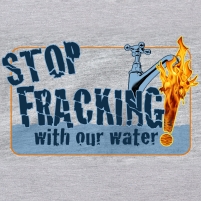What Chemicals are Used in Fracking?
Saturday, March 10, 2012

The good news with respect to the contents of hydraulic fracturing (fracking) fluids is that about 99% consists of water. The bad news is that the remaining 1% includes highly toxic chemicals that can cause harm even in tiny amounts. The subject has raised concerns because the explosive nature of fracking is alleged to have caused some of these chemicals to enter waterways. Fracking entails injecting millions of gallons of chemicals, sand or fluids into a well to crack open the rocks and allow easier access to the natural gas.
Some of the more dangerous chemicals used are hydrofluoric acid (lethal dose: 1.5 grams), sulfuric acid (lethal dose: between one teaspoonful and one-half ounce) and formaldehyde (lethal dose: one ounce.)
According to a report released by Democrats in the House of Representatives, between 2005 and 2009 the 14 oil and gas companies engaged in fracking used 750 different chemicals and other components in the fluid they injected into the earth. The most common substance used in fracking is methanol, which is classified as a hazardous pollutant and can be found in antifreeze, paint solvent and gasoline.
-David Wallechinsky
To Learn More:
What the Frack is in That Water? (by Lena Groeger, ProPublica)
Texas Forces Disclosure of Fracking Water Use (by Noel Brinkerhoff and David Wallechinsky, AllGov)
Ohio Closes Fracking-Related Injection Wells after Earthquakes (by David Wallechinsky and Noel Brinkerhoff, AllGov)
Chemicals Used in Hydraulic Fracturing (U.S. House of Representatives Committee on Energy and Commerce Minority Staff) (pdf)
- Top Stories
- Unusual News
- Where is the Money Going?
- Controversies
- U.S. and the World
- Appointments and Resignations
- Latest News
- Trump to Stop Deportations If…
- Trump Denounces World Series
- What If China Invaded the United States?
- Donald Trump Has a Mental Health Problem and It Has a Name
- Trump Goes on Renaming Frenzy






Comments